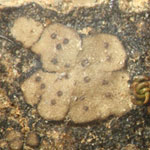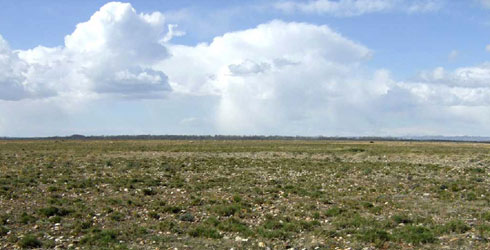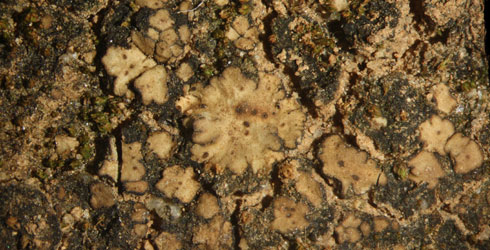Endocarpon pusillum (hedwig)
Endocarpon pusillum is an unusual lichen, because the algal component is not only found in the vegetative body, but also in the spore-forming fruiting body. This means it can be dispersed along with the fungal partner.

The lichen species Endocarpon pusillum grows on soils and forms squamules up to about 4mm. © C Gueidan
This characteristic probably helps the lichen colonise otherwise bare substrates.
The species often grows in areas where land is grazed by farm animals. As agricultural practices have changed, however, the lichen has become less common and may even be extinct in the UK.
Species detail
-

Taxonomy
Find out how to recognise Endocarpon pusillum.
-

Distribution
Endocarpon pusillum is found worldwide, in arid and cool to temperate regions. It colonises bare soils and contributes to soil conservation. Find out more.
-

Biology
A lichen is two distinct organisms - a fungus and an alga - living symbiotically. Find out where the algae live and how this long-term partnership benefits both species.
-

Conservation
Changes in farming practices have led to the decline of Endocarpon pusillum. Find out why.
-

References
Get more information on Endocarpon pusillum.
Images

A typical landscape habitat for Endocarpon pusillum.
© A Wolff - CEEP
Biotic soil crust formed of Endocarpon pusillum, cyanobacteria (Nostoc) and mosses.
© C Gueidan
Squamule of Endocarpon pusillum with several fruiting bodies.
© C Gueidan
Endocarpon pusillum.
About the author
Author's quote
"This species seems to have become rare in the UK, most probably because of habitat loss. Historically, Endocarpon pusillum has been used in many experiments on lichen development. Conservation measures are necessary to protect this biologically-interesting lichen species."
Toolbox
Glossary
Asci
Plural of ascus - sexual spore-bearing cells.
Muriform
Regular, brick wall-like arrangement.
Perithecium
Bottle-shaped fruiting body.
Rhizines
Hairlike growths that bind the thallus to its substrate.
Squamules
A small, loosely attached thallus lobe - vegetative structure.
Symbiotic
Close and long-term interaction between two different species.
Thallus
Vegetative body.

